High Quality Yemen Coffee Origin: Yemen's Most Expensive Coffee Bean Mocha Coffee Bean Flavor Features
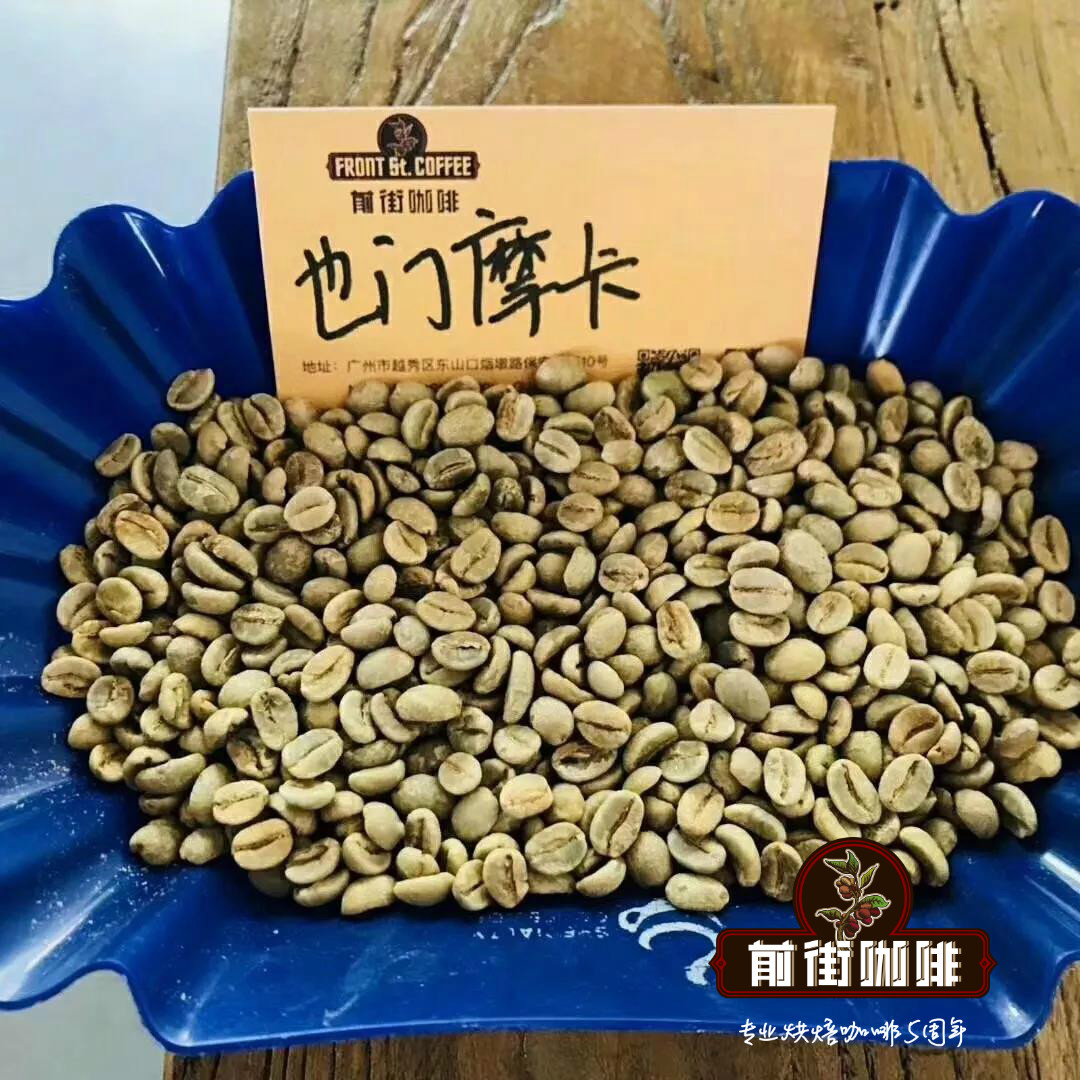
Professional coffee knowledge exchange more coffee bean information please follow the coffee workshop (Wechat official account cafe_style)
Although the wave of fine goods is the revival of "technology replacing machinery", the market is still inseparable from what dominates supply and demand. Downstream operators will use different punching methods to express different coffee styles, and upstream farmers will also develop characteristic treatments in response to market trends. But it turns out that there is a country in the world that has been producing coffee in the most primitive way since the sixth century, and it is Yemen.
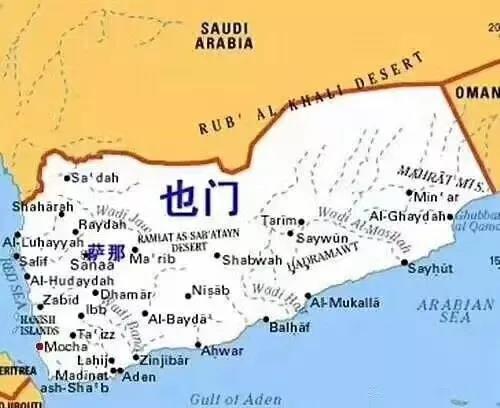
Yemen is located in West Asia, only one step away from the African continent. Without the promotion of Islamic priests in the Arabian Peninsula, coffee might still be a wild plant in Ethiopia. Legend has it that coffee was introduced when it was ruled by Ethiopia in the sixth century and was named Qahwa, which means red wine in Arabic. Later, the Ottoman Empire invaded in 1536 and controlled the coffee trade. In order to protect export earnings, the authorities strictly prohibit the export of raw beans, and the seeds must be boiled in boiling water before leaving the country.
One of the driest countries in the world
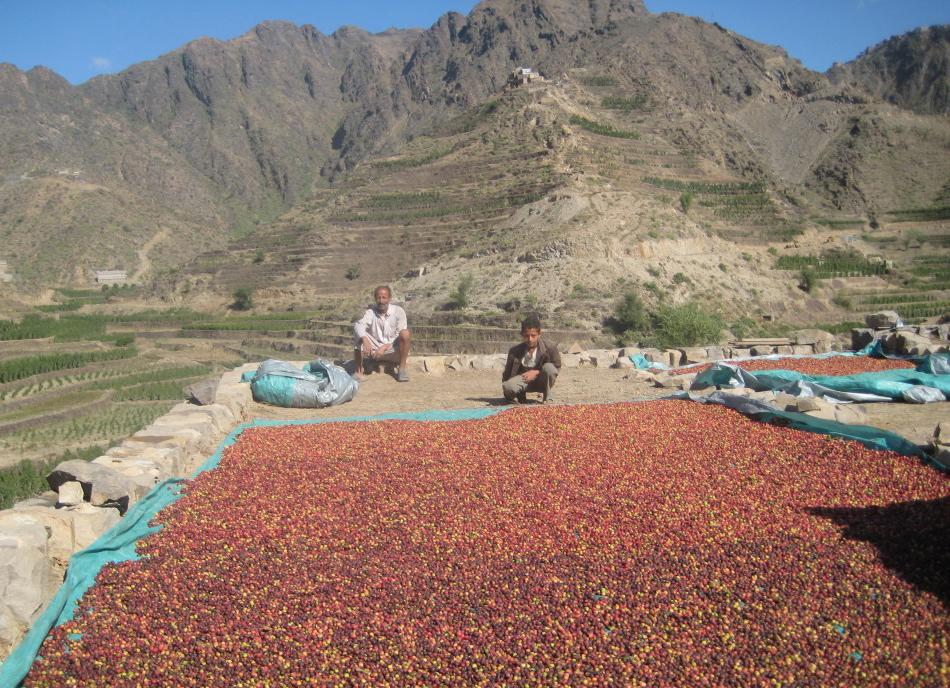
Yemen is one of the driest countries in the world. Economically, the country currently relies on oil exports for three-quarters of its income, but the World Bank predicts that the country's stocks will be used up around 2017. In a country that used to be self-sufficient in farming, 80% of its crops now have to be imported. The reasons include population expansion and water shortages caused by local misuse of Qat, a crop as old as coffee.
Chart grass is a social drug commonly used by residents of the Arabian Peninsula. Yemenis like to open rooms for banquets at home, chewing chatgrass and gossiping with friends. It contains the stimulant Cathinone, which is as refreshing as a light amphetamine. However, when the power of the drug weakens, the person who takes it will feel depressed. Although the World Health Organization (WHO) does not list it as a drug, it has been banned in many Western countries.
On the other hand, Yemen has been plagued by drought since ancient times. Its major cities rely on underground water sources, of which agriculture takes up 90% of the potable water, while growing Qat alone has already spent a lot of water, and the authorities estimate that the underground water storage in Sana'a, the capital, will be used up in 2017. Most of Yemen's cities are built on high mountains, and residents rely on well water from the government or the private sector for a living. The country has as many as 40, 000 to 70, 000 wells, some as deep as 600 meters underground. In addition, pumping water up the hill is expensive, with the government spending as much as $7 billion a year on drilling and pumping water. Therefore, in recent years, the local government has decided to ban chartgrass, which is a waste of water and cannot satisfy hunger, and replace it with other crops. Coinciding with the rise of the boutique coffee boom, the Yemeni government is now trying to encourage farmers to switch to coffee, which consumes half as much water as Chategrass.
Follow the most primitive way of production
Real Yemeni coffee is not common. After the fruit is ripe on the trees, the farmers harvest it by hand and dry it on the roof of the stone house built by the mountain. The process of shelling meat depends entirely on crude stone grinding equipment. Due to inconvenient transportation, coffee usually changes hands several times and is mixed with beans of uneven size and uneven size. In addition, there are many defects and improper handling. If measured by modern cup standards, Yemeni coffee is difficult to reach the grade of boutique. But high-quality Yemeni coffee has a unique flavor: complex Middle Eastern spices, bacon, ripe fruit, wine, cocoa, mellow taste and sweet taste. Like durian and stinky tofu, people who like and hate go to extremes.
High quality Yemeni coffee has a unique taste.
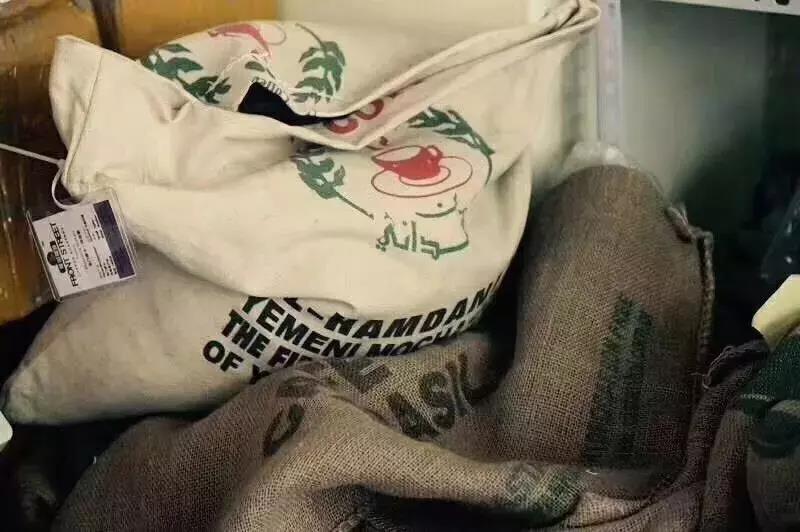
In terms of producing areas, Mattari to the west of the capital is dominated by heavy taste and cocoa. Harazi has higher acidity and thinner taste. Others are Dhamari (also known as Anisi), Ibb and Sana'a named after the capital. But Sana'an is not a producing area, but a middleman who mixes fruits collected by neighboring villages for export, just like Yemeni coffee in the past, using the port name Mocha.
In contrast to the washing method used in most coffee producing areas in the world, Yemeni coffee is completely sun-treated, and the process of stone grinding (crushing with two stone mills) makes chopped beans mixed, resulting in an irregular appearance. Raw beans are often mixed with twigs, small stones and even sun-dried insects (which are screened out during baking). It also has the most unique, rich and fascinating complex smell in the world: "Red wine, wild game, dried fruit, blueberry, grape, cinnamon, tobacco, sweet spices, log and even chocolate." you can see all kinds of adjectives used to describe Yemeni mocha!
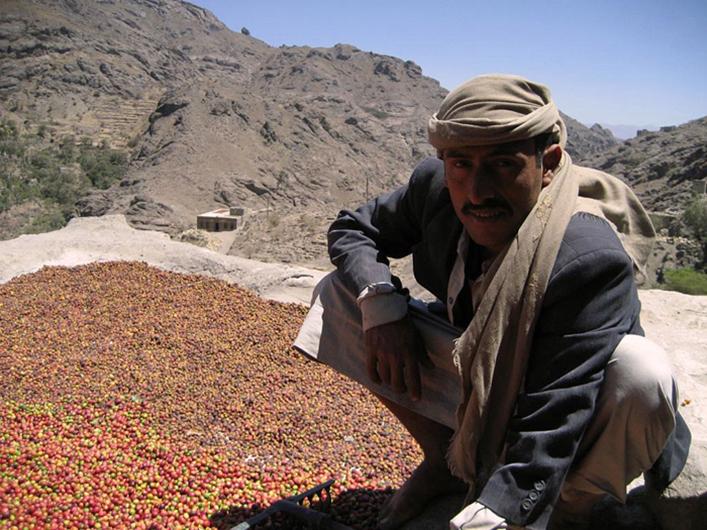
Because of the sun-dried pulp, the flavor of the coffee berries has a chance to "seep" into the coffee beans, and when the coffee fruit falls on the dry soil of the African plateau, it will also absorb the smell of the surrounding organic matter. In addition, the intense winter sun in Arabian Peninsula gives "the smell of the sun" (you can smell a similar smell on sun-basked quilts), the fermented flavor of ripe fruit naturally fermented from the flesh, and a hint of soil. There are 300,000 coffee plantations ranging from 3000 to 8000 feet above sea level, as well as ancient, 100% organic treatments that make the Yemeni mocha unique in the world.
In the common Yemeni mokas, Mokha Mattari is the most famous. Madali, produced in Bani Matar (also known as Bany Mattar) province, is a coffee produced at high altitude. it usually has a good aroma of red wine, dry fruit, thick taste, deep roasting and often shows the sweetness of chocolate caramel.
Due to the sharp decline in production due to political instability in Yemen in recent years, Mokamadali, the most famous coffee industry, has become a target for water adulteration, and has been mixed with lower-grade shoddy beans from time to time. Nowadays, even if it is marked as Madali, it is not a guarantee of high quality. Good quality Madali beans are small, raw beans have sweet wine aroma and moderate ripe fruit fermentation flavor, excellent Madali performance will never let coffee gluttons down!
A coffee expert once said, "the taste of Yemeni mocha is so diverse that it varies not only from different places, different tree species, and different batches, but also from each sack or even every cup." "because of his complexity and variety, it is a challenge for coffee roasters to bake the best flavor of Yemeni mocha! Medium and shallow roasting shows sweet fruit, mild, warm sun-fermented taste, while deep baking shows a strong aroma of red wine and a bitter chocolate aftertaste, which makes people taste again and again, "the aftertaste lingers for three days." It's no wonder that there are so many coffee gluttons who love this way and regard Yemeni mochas as their favorites.
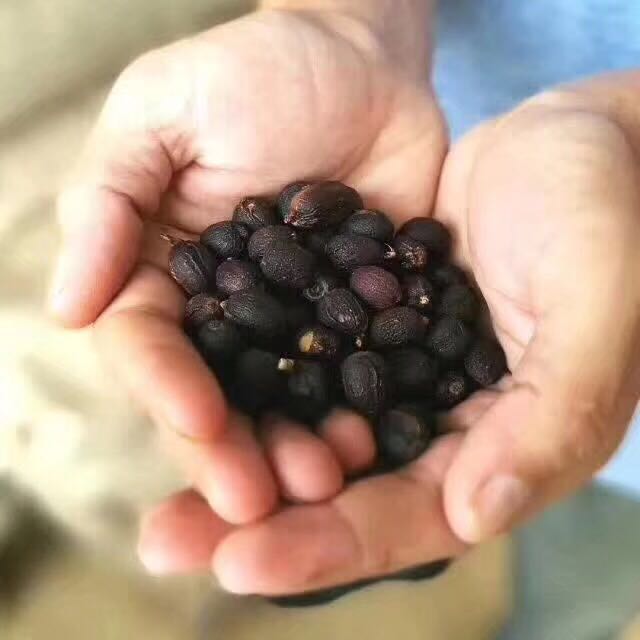
A confusing name
There are no general guidelines for the naming of Yemeni coffee, and there is no official grading system. Local residents have their own classification system, with hundreds of coffee codes and names for internal classification purposes, but they are not suitable for commercial market (export) coffee. In the commercial market, the Yemeni mocha is usually named in one of two ways: "place name", or "tree species name".
The Yemeni Mokamadali Mokha Mattari and the Yemeni Mokashanani Mokha San'ani are produced in Bani Matar province and the hillside near the capital San'a, respectively, while the Yemeni Mokayishi Mary Mokha Ismaili adopts the tree species nomenclature, which is produced in Hirazi, southwest of Bani Matar.
Mokamadali (Mokha Mattari): the most famous coffee market name in the province of Bani Mattar (another word for Bany Mattar) from the western part of the Yemeni capital Sana'a. Coffee is produced at high altitude, usually with a good aroma of red wine, dry fruit, thick taste, deep-roasted and often bitter sweet chocolate. Good quality Madali beans are small in shape, with sweet wine and moderate ripe fruit fermentation flavor of raw beans. Always the winner because of the more obvious Yemeni style.
Mokha San'ani: a widespread market name for coffee from some growing areas west of the Yemeni capital Sana'a. It is a mixture of beans from tens of thousands of small farms on the hillside near the capital San'a (left, Sana'a, Yemen). Planted at a slightly lower altitude than Madali, generally speaking, it tastes thinner and less acidic, but it has a good fruit flavor and often has better ripe fruit and wild game than Madali. According to my experience, the quality of Sanani varies greatly in recent years, and sometimes there are inferior goods with flat flavor, fishy smell and excessive fermented flavor. Careful cup testing and selection is a must for coffee makers to do their homework and must not be lazy.
Mokha Ismaili: one of the traditional ancient tree species, a market name for famous coffee from central Yemen, is also described as a plant classification of traditional Yemeni coffee with high beverage quality. Planted at a high altitude of more than 6500 feet, the beans are characterized by a more round shape, smaller beans than Madali, thick taste and high complexity. In general, they often outperform Madali. This is the least produced and most expensive Yemeni mocha (Yemeni mocha is no longer cheap). The high-quality Mokayishi Mary is produced in Hirazi (although it is famous as Bani Matar, it is the best-known local reputation in Yemen). The highest elevation in Hirazi is 8000 feet.
Mokha Rimi: produced in the Djebel Remi (also known as Raimi, Rayma) area, the quality is similar to that of Shannani, which is usually slightly fermented, occasionally with surprisingly strong sweet aromas of raisins, and when roasted properly, the coffee beans smell like opening a full-bodied bottle of jam.
Mokha Yafeh: produced in the southern Yemeni province of Yafeh (also known as Yaffe), it belongs to the uncommon Yemenmoka. It is the only "southern flavor" in Yemen, and its production is small. Almost all of it is sold to the neighboring United Arab Principality, and it is rarely seen in the international boutique coffee market.
Arabian mocha: a coffee of single origin in the mountains of Yemen from the southwestern tip of the Arabian Peninsula bordering the Red Sea. The best cultivated coffee in the world is famous for its high viscosity and special acidity of rich wine.
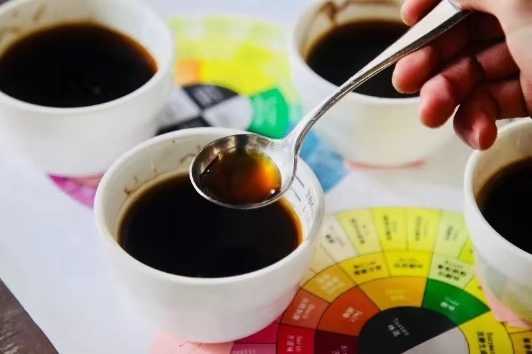
The Yemeni mocha has achieved different genres according to the planting areas, such as the chocolate and sour taste of the MATTARI mocha, and the rough and fragrant taste of the SANANI mocha.
The characteristics of Yemeni coffee:
Although the Yemeni coffee is of high quality and smooth aroma, there is something unsatisfactory, that is, the quality can not be guaranteed continuously.
The classification of its coffee beans is also uncertain. Traditionally, the best coffee beans in Yemen come from Mattari, followed by Sharki.
Then there was Sanani. These coffee beans are low in caffeine. Deep-baked Yemeni coffee often shows chocolate-like bitterness.
Fancy coffee, which affects today's addition of chocolate sauce, is also known as "mocha".
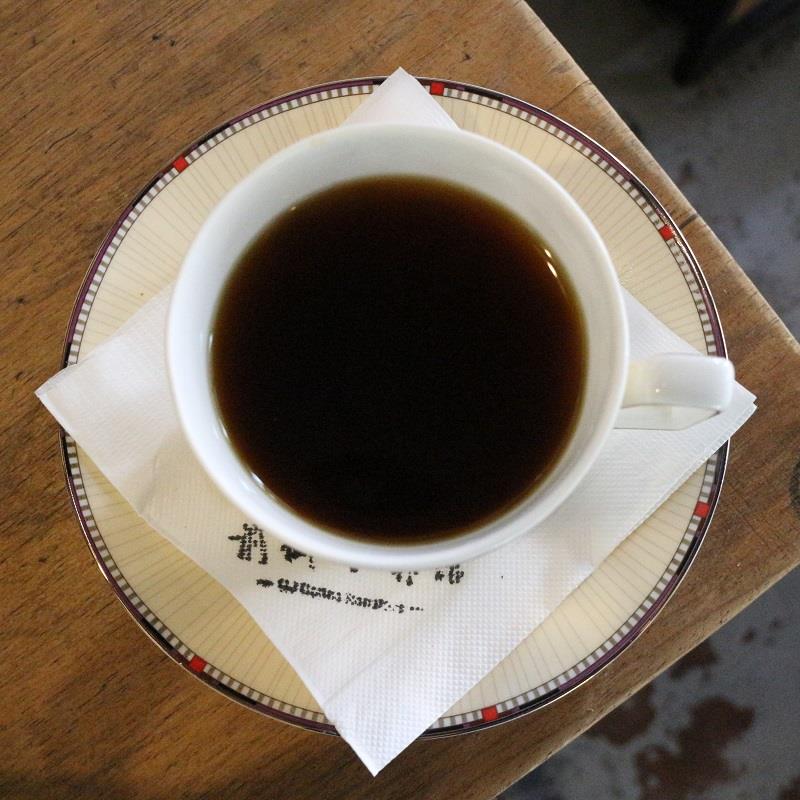
Yemeni coffee has the most unique, rich and fascinating complex smell in the world: red wine, wild game, dried fruit, blueberry, grape, cinnamon, tobacco, sweet spices, log and even chocolate. you can see a variety of adjectives used in Yemenmoka.
Just as there are many meanings of mocha, there are various spellings of mocha in English: Moka, Moca and Mocca are all common spellings, and there are as many as four local spellings on sacks and documents of Yemeni coffee: "Mokha", "Makha", "Morkha" and "Mukha", which all have the same meaning.
Qianjie Coffee Yemen Mocha Matali Ancient Solar treatment Coffee beans fresh issued an order for roasting black coffee beans
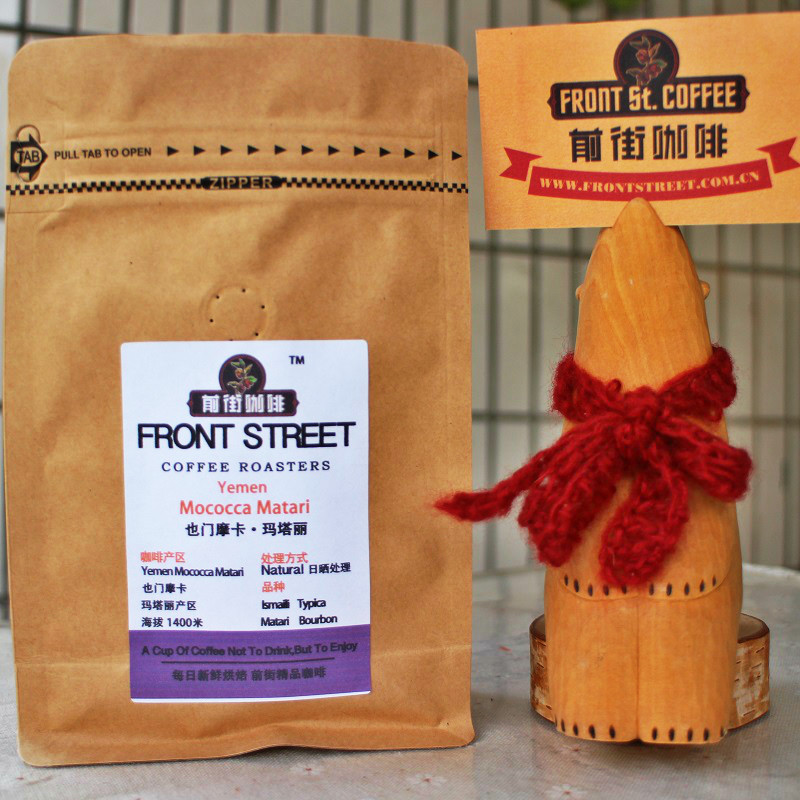
Purchase link: https://item.taobao.com/item.htm?spm=a1z10.1-c-s.w4004-15673140431.18.70b05cad3LqFdr&id=567246039419
Important Notice :
前街咖啡 FrontStreet Coffee has moved to new addredd:
FrontStreet Coffee Address: 315,Donghua East Road,GuangZhou
Tel:020 38364473
- Prev
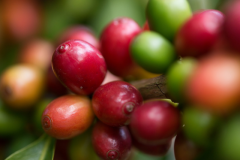
The Origin, characteristics and long-standing Market trend of Fine Coffee Yemeni Moka
Professional coffee knowledge exchange more coffee bean information please follow the coffee workshop (Wechat official account cafe_style) Yemen, the hometown of mocha coffee, Yemen is the first country in the world to produce coffee on a large scale as a crop. The Yemeni mocha coffee has distinctive taste characteristics, special taste and varied levels, it has a strong sour taste, it is the kind of pleasant fruit acidity, and
- Next
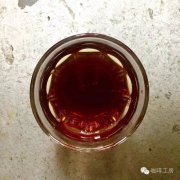
What are the characteristics and advantages of the rise of Yunnan coffee in China to the road of high-quality coffee?
Professional coffee knowledge exchange more coffee bean information Please follow Coffee Workshop (Wechat official account cafe_style) in the recent Ministry of Foreign Affairs held the charm of Yunnan World sharing global promotion activity, Yunnan coffee blue hall, attracted the world's attention, Foreign Minister Wang Yi praised Yunnan coffee: it is the best coffee that I have traveled all over the world and tasted coffee from every country in the world. Cloud
Related
- Detailed explanation of Jadeite planting Land in Panamanian Jadeite Manor introduction to the grading system of Jadeite competitive bidding, Red bid, Green bid and Rose Summer
- Story of Coffee planting in Brenka region of Costa Rica Stonehenge Manor anaerobic heavy honey treatment of flavor mouth
- What's on the barrel of Blue Mountain Coffee beans?
- Can American coffee also pull flowers? How to use hot American style to pull out a good-looking pattern?
- Can you make a cold extract with coffee beans? What is the right proportion for cold-extracted coffee formula?
- Indonesian PWN Gold Mandrine Coffee Origin Features Flavor How to Chong? Mandolin coffee is American.
- A brief introduction to the flavor characteristics of Brazilian yellow bourbon coffee beans
- What is the effect of different water quality on the flavor of cold-extracted coffee? What kind of water is best for brewing coffee?
- Why do you think of Rose Summer whenever you mention Panamanian coffee?
- Introduction to the characteristics of authentic blue mountain coffee bean producing areas? What is the CIB Coffee Authority in Jamaica?

